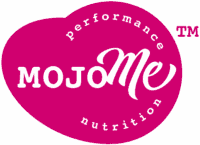The best products demand the best ingredients. The taste speaks for itself. Baking is also an exact science and so following the instructions on the pack and using the right equipment is essential. Deviations from these instructions can make a difference to the final bake.
Our recipes are written with specific tin dimensions in mind and this affects the final outcome. Crucially, the size of the tin influences the cooking time. For perfect results every time, we recommend using the specified size tins for your baking. Given the lifespan of most tins, a quality product offers a great value investment. If you still wish to deviate it will be an experiment, so be sure to bake until a skewer inserted comes out cleanly.
For best results, make sure that all of your ingredients, especially your eggs are at room temperature. Simply keep them on the counter for 30-45mins prior to using or put them into a bowl of warm water for 15 minutes and you are good to go.
Our recipes are tested and based on using a conventional fan assisted oven. Oven's do vary slightly and some have hot spots, so just keep an eye on your baking as it nears the end of its cooking time. As a rule gluten-free baking requires lower temperatures with longer baking times.
Cakes require a 20cm spring-form tin (greased and lined)
Brownies require a 20 x 20cm square pan (greased and lined)
Bread Loaf requires a 240 x 100 x 70mm non-stick loaf tin (Do not use silicon moulds because in our opinion these produce inferior results)
Pizza We use the base of a 22cm spring-form tin as a template to produce 4 perfectly even and round pizza crusts from each pizza pack. When measuring out ingredients always use precise measuring spoons and use level quantities unless the instructions say otherwise.
Please note that metal tins produce far superior results. Please refrain from using silicone moulds for low carb baking because you will not get the same amount of rise.
It's really not advisable because our recipes tend to use a few eggs at a time, so with the cumulative difference you may get unexpected results.
You can use both types but digital scales are always preferable as they give precise figures to the last gram.
Yes! This is how we make them, it might not be what you are used to baking but our recipes are tried, tested multiple times and are correct as written.
A cooling rack will help moisture in the form of steam escape from your freshly baked cakes and breads. Allow your cakes and breads to sit in the tin for 5-10minutes after removing from the oven before turning out onto a cooling rack or wire tray.
Taking baked breads and cakes straight from the oven and placing them on a surface that is too cold can make them sink. Some chefs advise that when the baking is done, turn off the oven (leaving the loaf or cake in the oven) so that it can cool more slowly.
Yes, it's recommended to keep your cakes at room temperature in a suitable airtight container so that they don't dry out or go hard. Our breads can be sliced (±20 slices) and our pizzas can be refrigerated or frozen for your convenience.
